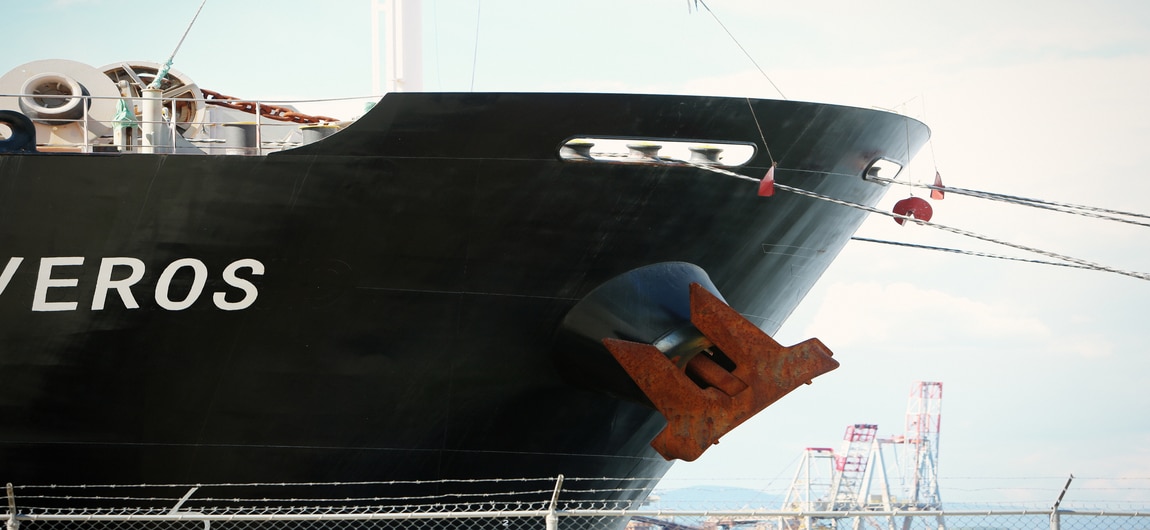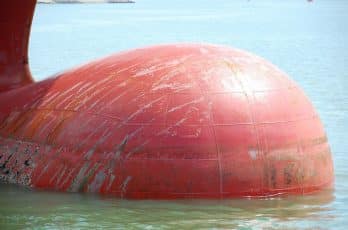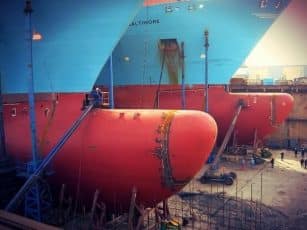The idea that container ships are sailing progressively slower is not always greeted with glee by companies importing goods from China to the UK. It’s a long way for your products to travel at a slower than optimal pace. Behind the scenes, the shipping lines have been struggling with fuel prices that have doubled in recent years. They’ve come up with a solution…. chop off the ship’s bulbous nose.
Big Nose
Concord has an iconic shaped nose so it could pierce the air around it at great speeds. In water however, the rules change. To go faster, container ships use a large bulbous bow that quite frankly looks ridiculous. This is a counter-intuitive feat of engineering that counteracts the wave resistance caused by the bow wave of a conventionally shaped bow. These have been designed so at speeds of around 24 knots the bulb forces the water over it upwards creating a wave that coincides with the bow wave and cancels out the wave resistance with it. This means that the ship can go at the desired speed but will greater fuel efficiency.
Fuel Price Boom
The problem has arisen since the huge increase in fuel price following these vessels being launched in 2006, within a few years they were moored up and not used during hard times for the shipping industry. If these vessels were used at the high speeds they were built for (reportedly up to 30 knots) then their fuel consumption would be huge creating price increases that wouldn’t be tolerated. As a result, sailing at a low speed to save fuel was their only option. With the bulbous bows however, this posed a new problem. At speeds as low as 12 knots, they increased drag which was not offset by countering the bow wave.
Nose Job
By replacing the bulbous bow with a flatter one, it dramatically reduces the amount of fuel required to get the vessel from China to the UK laden with containers of eagerly anticipated cargo. In addition to the ‘nose jobs’ the shipping line is cutting off and heightening the navigation bridge so they can fit another layer of containers while also modifying the engine room. These alterations can lead to an efficiency gain of up to 20 percent. This is a comparable improvement to replacing the vessel with a brand new ship.
Out with the old bulbous bow and…… In with the smaller bow for lower speeds


